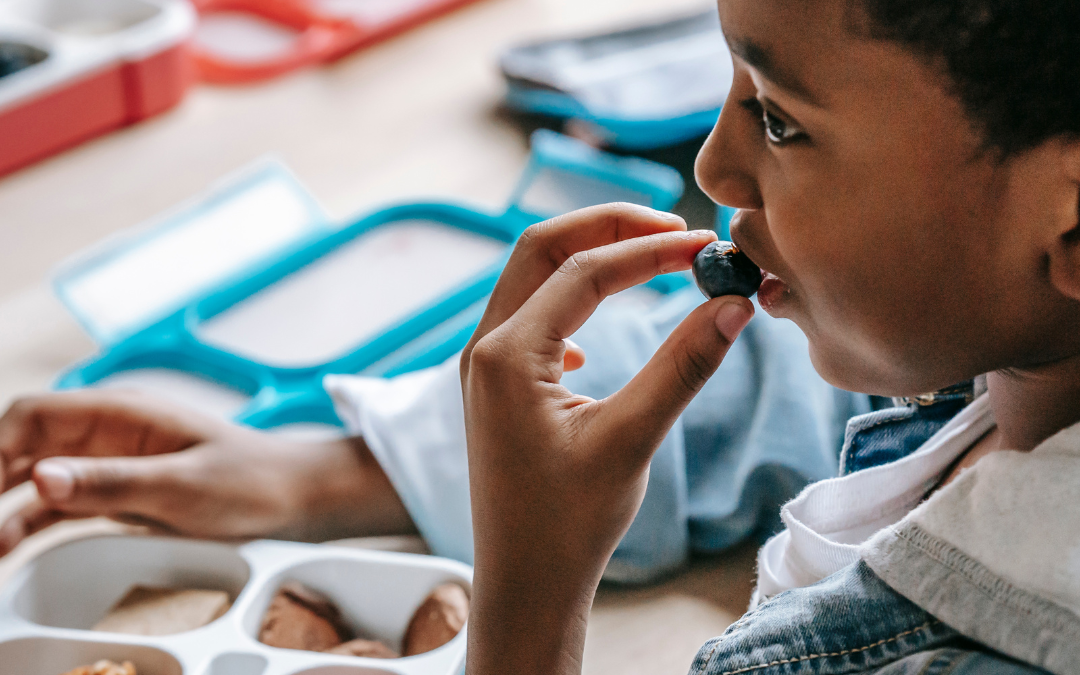In this weeks blog we would like to quote some great references from: Better Health Channel about Healthy School Lunches; https://www.betterhealth.vic.gov.au/health/healthyliving/healthy-eating-school-lunches
“School is a time when children start to make independent choices about their lifestyles. School aged children learn quickly and are influenced by friends and popular trends. This is an important time to talk about and encourage healthy food habits.
Involving children in planning and preparing their own lunchboxes gives them the opportunity to learn about healthy eating, and also gives them a chance to make autonomous decisions about what they will be eating during the day.
Involve your Children in Healthy Choices
Tips to help get your kids involved include:
- Talk to your children about what they would like to have in their lunchbox. Discuss healthier food and drink choices and decide what will be in the lunchbox together.
- Write a shopping list together. Take your children shopping with you and let them choose foods and drinks from the shopping list.
- Encourage your children help prepare their lunchboxes. Older children may be able to prepare most of their lunch themselves, and younger children can help with making sandwiches or cutting up soft fruit. It is a good idea to prepare lunchboxes the evening before to allow children to participate.
What to Put in Healthier School Lunches
The six key parts to a healthy lunchbox include:
- Fruit – best choices include fresh or tinned fruit. Dried fruit is sticky and high in sugar, so have it occasionally.
- Vegetables – try fresh crunchy vegetable sticks with dip or a small container with mixed vegetables such as cherry tomatoes, carrot sticks, and cucumber.
- Milk, yogurt or cheese – you can use reduced-fat options for children over the age of 2 years. For children who cannot tolerate milk products, offer appropriate daily alternatives like calcium fortified soy or rice drink or soy yogurt.
- Meat or meat alternative foods – try lean meat (like chicken strips), a hard-boiled egg or peanut butter. If your school has a nut-free policy, peanut butter and other nuts should not be included in your child’s lunchbox.
- Grain or cereal foods – like a bread roll, flat bread, fruit bread or some crackers (wholegrain or whole meal options).
- Drinks – tap water is best
Tips for Healthy Lunchboxes
- Cut up large pieces of fruit and put them in a container – this makes it easier to eat, especially if your child has wobbly teeth or if they have less time to eat than they are used to. Send a damp face washer to help with extra juicy fruit.
- Consider giving half a sandwich or roll for morning recess, as this is an easy way to get a healthy fill.
- In the hot weather, send frozen milk, yogurt or water, or even frozen orange segments. This makes a great refreshing snack and helps to keep the lunch box cool.
- Go for color and crunch in the lunch box by offering a variety of colorful vegetables and fruit.”
In conclusion, the choices we make for our children’s lunchboxes can have a significant impact on their overall health and well-being. By prioritizing fresh fruits and vegetables, lean proteins, and whole grains, we set them up for success both in and out of the classroom. Remember to involve your children in the decision-making process, as this not only educates them about healthy eating but also empowers them to make smart food choices on their own.
As parents, guardians, or caregivers, our role in shaping their dietary habits is instrumental.. So, as you pack those lunchboxes, think about the nutritious and delicious options that can fuel your child’s day and set them on a path to a lifetime of healthy eating.
Here’s to happy and healthy lunchtimes for our little ones!
Resources:
Better Health Channel. (n.d.). Healthy Eating – School Lunches. Retrieved from https://www.betterhealth.vic.gov.au/health/healthyliving/healthy-eating-school-lunches
National Health and Medical Research Council, Australian Dietary Guidelines, Australian Government.

